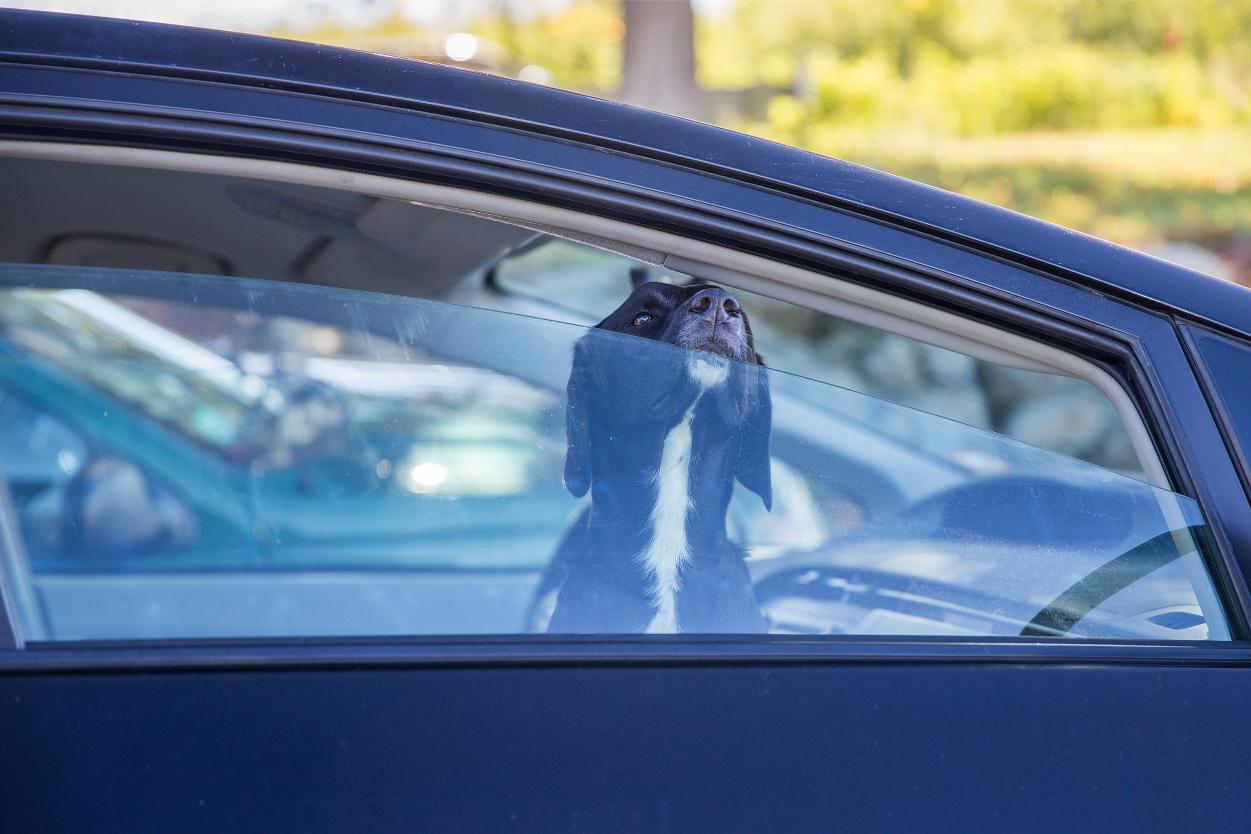The Dangers of Leaving Pets in Hot Cars

If you’ve ever sat in a parked car, you know that it doesn’t take too long for discomfort to set in. This can be true in any season, but the temperatures of late spring through early fall create some truly terrible conditions inside vehicles. Even cars parked in the shade, beneath cloud cover, or with the AC running are vulnerable to dangerously high temperatures. The dangers of heat stroke in pets are well known, and prevention is critical.
Fast Changes
Research has proven that a car parked on a relatively mild day (72 degrees F) can soar over 100 degrees in less than an hour. Pets lack adequate thermoregulation, meaning that when they get too hot they can’t really do anything about it, such as sweat effectively. Situations are even more dire for older, younger, overweight pets,thick-coated pets, those with chronic health problems, and brachycephalic breeds.
All pets, regardless of age, breed, health, and lifestyle can be vulnerable to the heat, and special care must be taken to prevent heat stroke.
What Happens In Heat Stroke
Our pets are unable to cool themselves down. They sweat through their paw pads and pant, but if they cannot bring their internal temperature down, they can face dire consequences. What makes it worse is that the following symptoms of heat stroke can rapidly develop:
- Excessive, uncontrollable panting
- Agitation, pacing, whining, restlessness
- Drooling
- Bright red gums and tongue
- Vomiting and/or diarrhea
- Increased heart rate
Without swift action, advanced signs of heatstroke, such as lethargy, confusion, weakness, collapse, and seizures, can precede organ failure and even death.
What Can Owners Do?
It is imperative to cool a pet down immediately. Bring an overheated pet to a cool, dim, well-ventilated place. Give them small sips of water, but do not force them to drink. Apply lukewarm compresses to the skin. Do not apply ice-cold water.
Because heatstroke in pets can turn into a life-threatening pet emergency, please contact us right away for assistance.
Summer Pet Safety
There are some great ways to enjoy the summer without raising the risk of heatstroke in pets.
- Exercise your pet in the early morning and evening hours before it gets too hot
- Always have extra cool water on hand
- Follow the rule: If it’s too hot for your bare feet, it’s not safe for your pet’s feet
- Plan your day ahead of time, and leave your pet at home instead of subjecting them to the heat.
- Maintain a grooming schedule to keep their coat as light and trim as possible
If you have questions about summer pet safety, please call us at (614) 305-2085. Our team at All Critters Veterinary Hospital is always here to help.
